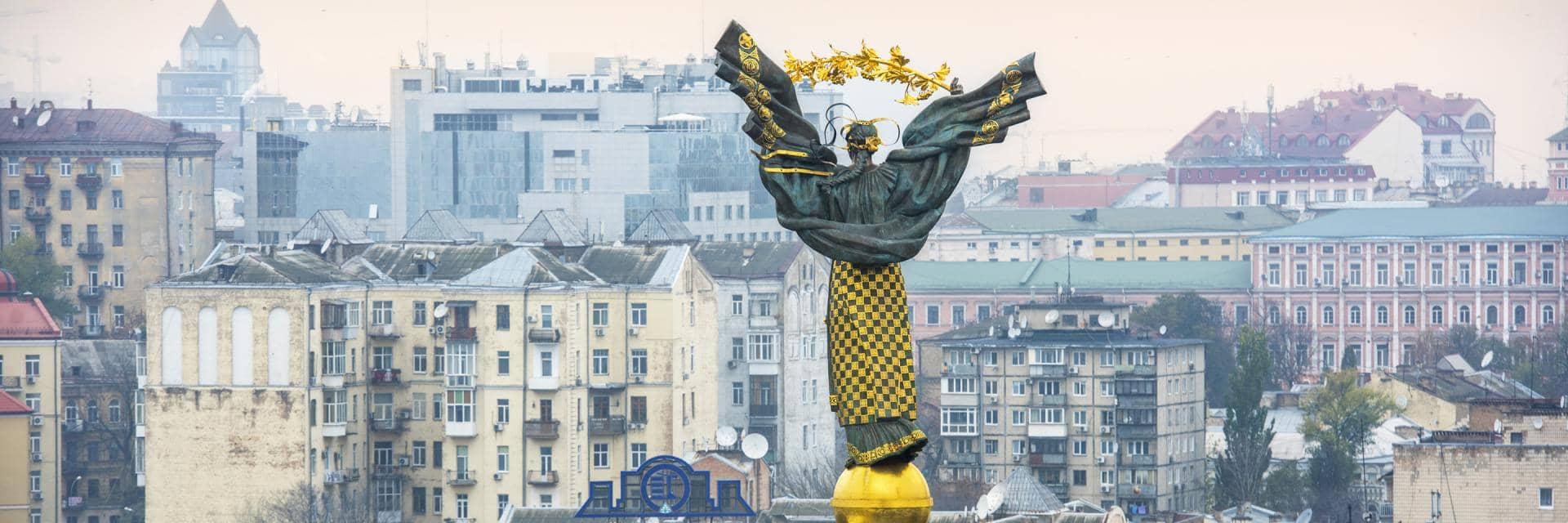
What does the Russia-Ukraine conflict mean for the world economy?
13 April 2022
5 minute read
You’ll find a short briefing below. To read the full article, please select the ‘full article’ tab.
-
Summary
- Russia-Ukraine conflict rocks financial markets, as economists rush to downgrade global growth prospects, and hike inflation forecasts. Barclays Investment Bank downgraded its growth forecast to 3.4% for this year in March, from 4.3% at the start of 2022.
- Commodity markets feel brunt of the disruption in financial markets, Russia being the biggest exporter of oil, while the country and Ukraine produce an estimated 12% of globally traded calories.
- As leading central banks turn more hawkish to counter growing inflationary risks, the US Federal Reserve launches a rate-hiking cycle in March, while the Bank of England ups rates every month in the first quarter, despite the conflict.
- West fires a bazooka, with wide-ranging sanctions on Russia to try and isolate it from the global financial system. As a consequence, the country’s economic growth looks likely to fall into a deep recession.
- Even if a peace treaty between Ukraine and Russia is agreed, restrictions on trade with the latter and sanctions on its financial system will likely remain for some time.
-
Full article
Russia’s decision to invade Ukraine in February sent shockwaves through the global economy and financial markets. Given the possible impact that the conflict could have on commodity markets, trade, and confidence levels, its unsurprising that it led to economists rushing to downgrade their growth forecasts, and increase their inflation projections.
Commodities feel the heat
Commodity markets have felt much of the brunt of the disruption in global financial markets. Russia is the world’s third largest crude producer and the biggest exporter of oil to global markets, 60% of which goes to Europe. The continent imports around 40% of its gas from Russia and about 25% of its petroleum products. Additionally, Ukrainian pipelines account for around one-third of the flows into the region.
In the early days of the conflict energy prices soared as traders feared a supply shock might develop. Brent crude prices spiked to their highest level in nearly 14 years, at $139 a barrel. Prices have since eased, on speculation that key gulf producers would increase production of the commodity to mitigate some of the output shortfall.
The US has also played its part, with attempts to hike American shale production and by reviewing oil trading sanctions on Venezuela, which if removed could add more barrels to daily output levels globally.
Soft commodities in the firing line
The price of soft commodities, predominantly corn, wheat and other agricultural foodstuffs, also reacted to the potential supply disruption. Russia and Ukraine produce vast quantities of wheat, corn, and sunflower oil, with a combined production estimated at 12% of globally traded calories.
Russia is also the world’s largest producer of potash and nitrogen fertilisers, used to enhance crop yields. In the first two weeks of March, wheat prices surged around 50% and corn jumped to its highest level in close to a decade. The ramping up of prices of essential ingredients could hit inflation and food security, particularly in emerging markets.
Difficult to measure economic impact
Persistently higher commodity prices and the potential rationing of energy could hit industrial production levels, corporate profitability, and real household disposable incomes. To reflect the increased uncertainty over the outlook, Barclays Investment Bank downgraded its global growth forecast to 3.4% for this year in March, from 4.3% at the start of the year. Europe’s output profile is particularly vulnerable to events in Ukraine and Russia, and similarly, forecasted growth in the bloc was downgraded to 2.4% for 2022.
Central banks react
Higher commodity prices add further complexity to the balancing act being performed by leading central bankers. For instance, increasing energy and food costs can quickly push up wages. As such, inflation is expected to average 5.5% this year, compared to 3.2% last year.
The US Federal Reserve (Fed), European Central Bank (ECB) and Bank of England (BoE) have all turned more hawkish this year, even if by varying degrees. Events in eastern Europe seem to have had little effect on policy, so far. The Fed started a fresh rates hiking cycle in March, given that inflation is approaching 8% (a forty-year high) and unemployment is below 4%. Six more hikes look likely this year, with more to follow in 2023.
The European Central Bank has less room for manoeuvre than the Fed, given the weaker economic conditions in the continent. Rate hikes may be off the cards this year, though the central bank looks set to end its quantitative-easing programme in June or July.
Meanwhile, the Bank of England anticipates that inflation will reach 8% in the second quarter, with peak inflation to follow late in the year. In reaction to such predictions, the central bank put its foot down and lifted base rates for the third time this year in March. The base rate is likely to hit 1% this quarter, and then held until the end of the year, as consumers potentially face the biggest annual reduction in spending power for five decades in 2022.
Russian economy faces deep contraction
The wide-ranging sanctions quickly placed on Russia by the West since the outbreak of its battle with Ukraine, will impact its economy and population’s living standards profoundly. Its economic output is likely to contract by more than 10% this year.
The country is trying to forge better trading relationships with partners outside the West. But, this will take time, however much it can compensate for lost Western trade. Even if a peace treaty between Ukraine and Russia can be agreed, restrictions on trade and sanctions on the latter’s financial system look set to stay for some time.